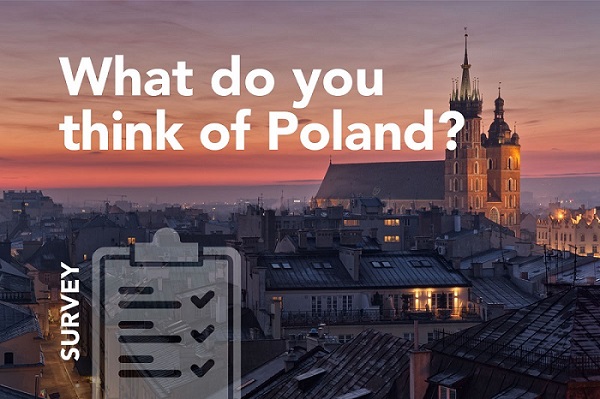Opolskie Voivodeship
Poland’s smallest province, but one that is rich in culture and full of treasures for tourists. There’s something for everyone here – whether you’re looking to sightsee or are craving some relaxation. The region boasts beautiful lakes and rivers, famous castles and palaces, fascinating natural, historical and even prehistoric sites; the capital of Opolskie province is the “singing” city of Opole…
Opolskie province lies in southern Poland, bordering on Czechia in the south, and sharing a border with four Polish provinces: Dolnośląskie, Wielkopolskie, Łódzkie and Śląskie. The province capital is Opole. The province covers an area of over 9,400 sq. km.
Opolskie: Full of Flavour
Can you eat Silesian heaven? How many chambers and towers does Moszna Castle have? Where do dinosaurs roam? What does St. Anne’s Mountain conceal? All these questions and more are answered in Opolskie.
Silesian heaven is a traditional dish made from cooked smoked meat in gravy with added prunes, served with Silesian buchty – the region’s distinctive steamed yeast dumplings. You can enjoy it at restaurants on the Opolski Bifyj Culinary Trail. In olden times the bifyj – kitchen dresser – had pride of place in Opole Silesia kitchens or dining rooms where family life took place. A bifyj had two sections: the bottom part was used for storing items like pots, flour and groats while its drawers held utensils; the upper part had decorative glass panes. The dresser was also where housewives kept their valuable recipes, which are still followed by the restaurants along the trail. These are historical venues run for generations with true passion as well as new restaurants, their common aim being to promote the Opole region’s cuisine in which Polish, German and Czech flavours are blended with former Polish eastern borderland aromas, and in which traditional dishes are made from regional products.
Not To Be Missed
The Opolski Bifyj trail takes you to many of the region’s most interesting sites, starting with Opole, a city that sings not only during the Festival of Polish Song. One restaurant with the trail’s distinctive symbol – a bifyj on a plate between a knife and fork – is found at the fairytale castle in Moszna. In the Middle Ages, this castle was allegedly inhabited by the Knights Templar, followed by various German noble and aristocratic families in succession over the centuries. You can also tour the castle when following the extreme tourist route or during the Blooming Azaleas Music Festival, spend a night there and revive your spirit and body in the castle spa.
Moszna is also included in the Opole Region Castles and Palaces Trail which features about a dozen sites, including the Silesian Piasts’ Castle in Brzeg. Initially a stronghold, later an elegant residence and today the Museum of the Silesian Piasts, it is sometimes called the Silesian Wawel, and not just because of the courtyard surrounded by arcaded galleries. From above the cornice of the entrance gate, visitors are greeted by a parade of Piast rulers, kings and dukes, starting from legendary ones like Piast the Wheelwright, through Mieszko I, Boleslaus the Brave, to the Silesian dukes, from Henry the Bearded to Frederick II Piast. This last duke was the father of the gate’s founder, George II, who saw the gallery of busts atop the gate as a way of underlining the vitality and everlasting nature of the Silesian branch of the Piast dynasty. Among other things, the museum houses Europe’s largest collection of gravestones of a single dynasty, a stone statue of George II’s beloved dog among them.
At JuraPark Krasiejów you’ll find almost 200 models of 70 species of Mesozoic amphibians and reptiles forming an educational path that is truly unique in Europe. A “time capsule” in the Time Tunnel takes you on a billion year journey through the life of the universe. The Palaeontological Pavilion houses Europe’s biggest fossils from Triassic amphibians and reptiles, viewed through the glass floor. This is the world’s only museum standing on an active palaeontological dig. Visitors will also enjoy the Science and Human Evolution Park with lots of interesting facts about evolution.
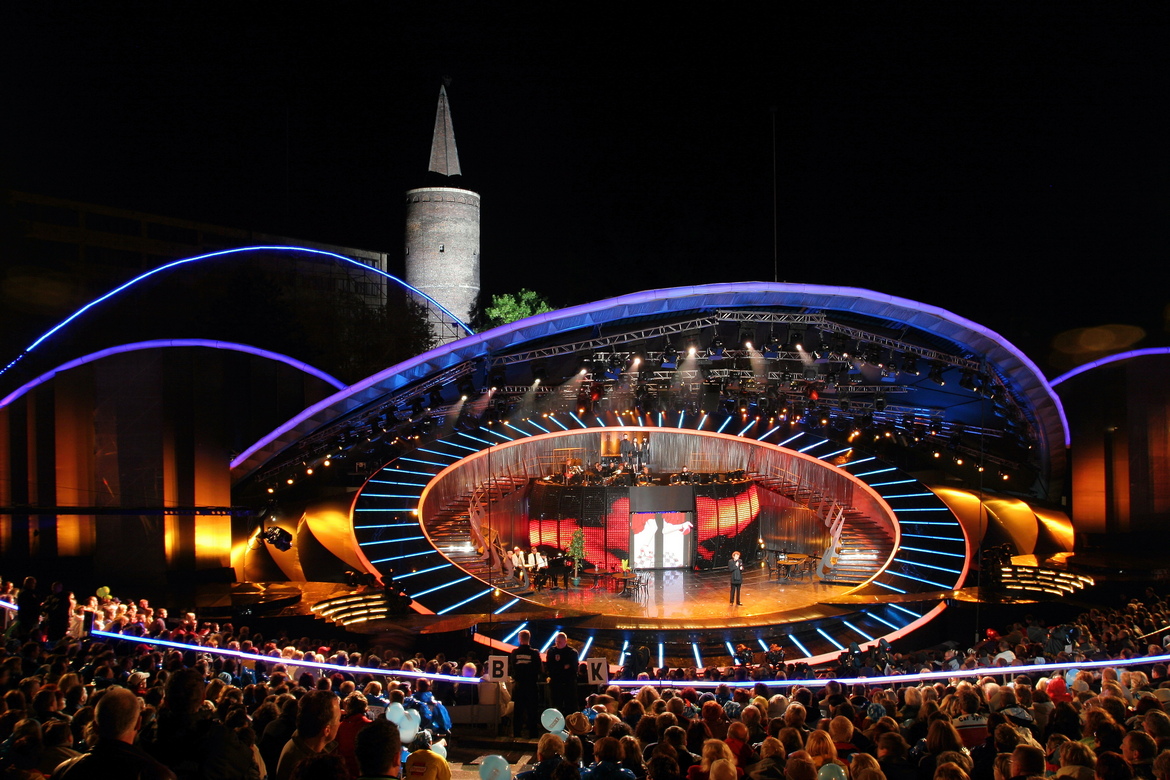
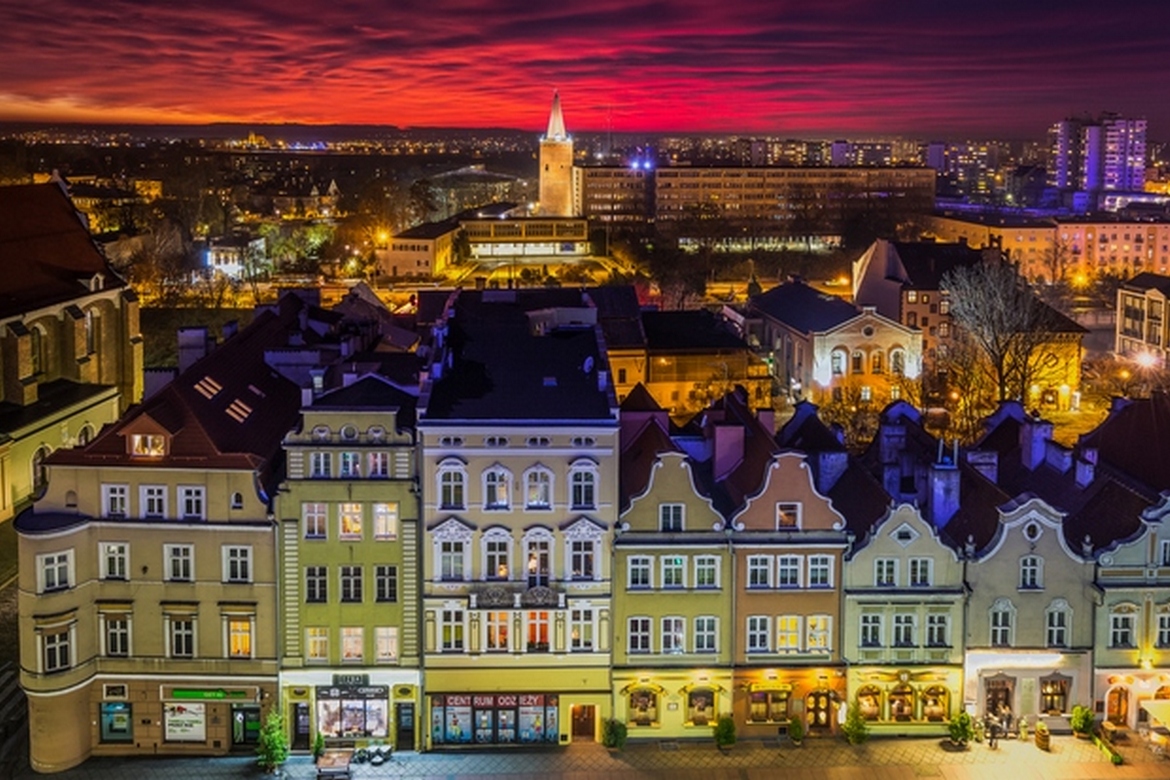
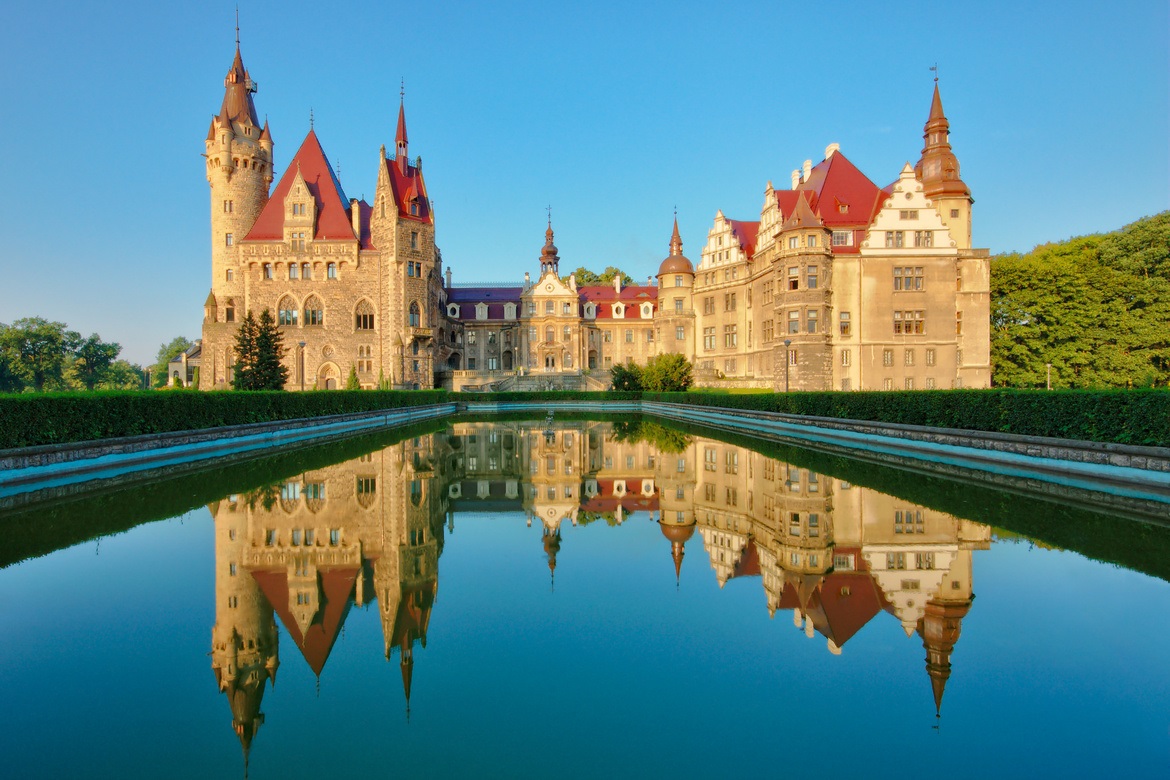
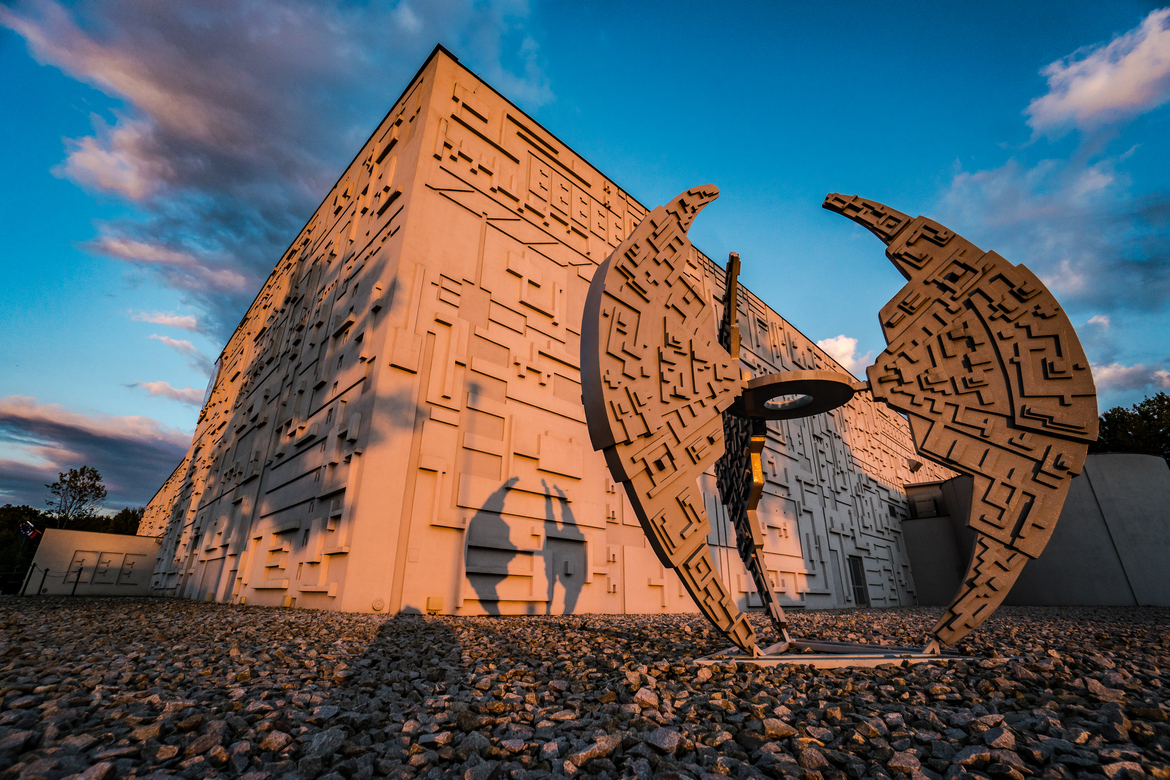
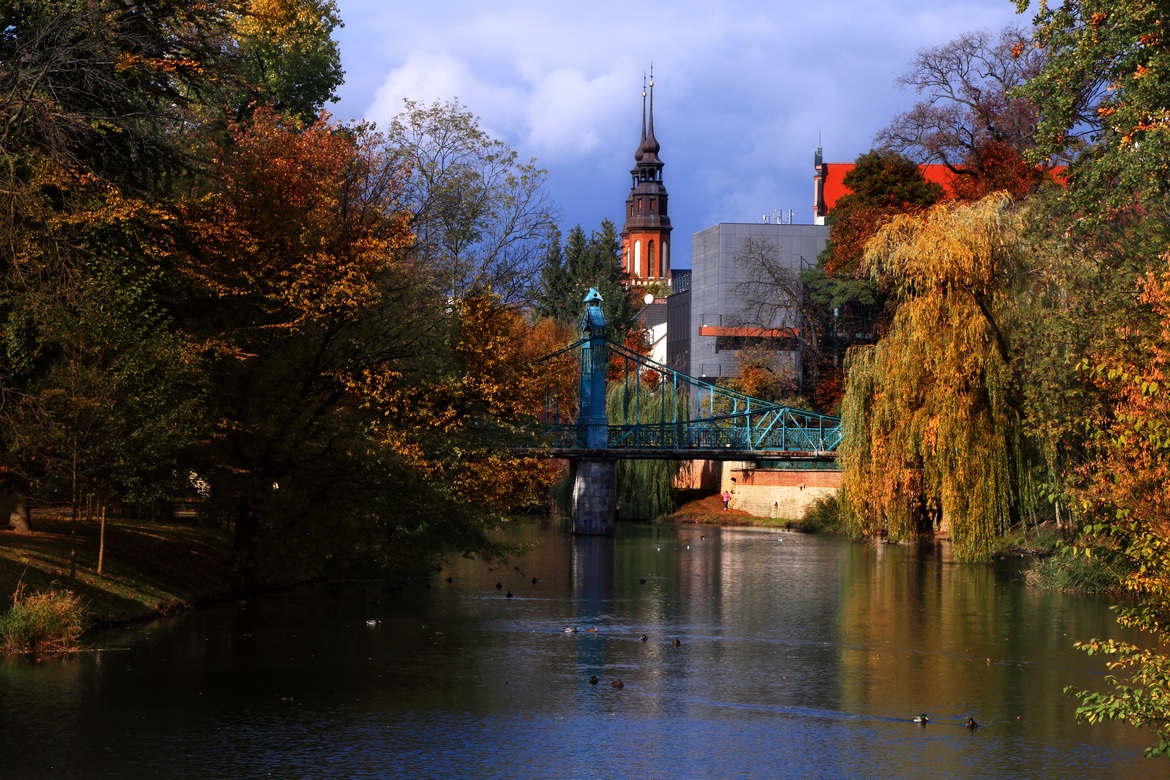
Other Important Attractions
Millions of years ago St. Anne’s Mountain in the Chełm Massif was an active volcano. Today at the very top sits a shrine with a miraculous figure of St. Anne with Virgin and Child. According to legend, the figure was among the goods plundered by a Spanish prince returning home from war. When the oxen pulling his wagon suddenly stopped in their tracks at the top of the mountain, the prince saw this as a sign from heaven, built a church there and left the sculpture in it. The main building of this monastery and Calvary complex is a single-nave minor basilica with Baroque interiors decorated with scenes from the life of Jesus’ grandmother. This is where the 54cm linden wood figure of St. Anne holding her daughter Mary and Mary’s son Jesus is kept. Listed as a monument of history, the shrine is one of Poland’s 30 most valuable historical sites and complexes. Surrounding the shrine is the 5,051-hectare St. Anne’s Mountain Landscape Park, part of the Opole Region Landscape Park Complex (alongside the Stobrawa and Opawskie Mountains parks).
The Central Museum of Prisoners of War in Łambinowice-Opole is a unique place commemorating the prisoners of the three POW camps that operated within the local military training ground. The first camp was set up by the Prussians for French POWs during the Franco-Prussian War. During World War II, one of the biggest Wehrmacht POW camp complexes existed here: Stalag VIII B, Stalag 318/VIII F and Stalag 344. After the war, part of the complex was used by the Polish Security Service (SB) as a labour camp where Germans and Silesians were held before being displaced from Poland and former members of Nazi organisations were imprisoned.
Nature lovers will be enchanted by Lake Turawskie, which you can reach by bicycle from Opole, and which is an ideal location for boating or kitesurfing, fishing for pikeperch or birdwatching from the lake’s sandbanks or lagoons. The Wooden Religious Architecture Trail will take you from Opole across Opole Silesia to a total of twelve charming old churches, among them a top-class historical site: St. Anne’s Pilgrimage Church which is based on the outline of a five-petal rose.
Lake Nyskie, a reservoir on the River Nysa Kłodzka with a view onto the Opawskie Mountains and Czechia’s Rychlebské hory, is the perfect place for sunbathing, camping, angling and boating, particularly during summer season. It’s also worth seeking out the “Polish Carcassonne” – Paczków and to Byczyna; both have almost completely preserved their original town walls.
Events worth attending include the National Festival of Polish Song in Opole, the Summer of Flowers in Otmuchów, the Days of Nysa Fortress (be sure to see the town as well!), the International Knights’ Tournament in Biskupice near Byczyna, and the Carl Maria von Weber Festival of Historical Parks and Gardens in Pokój.


